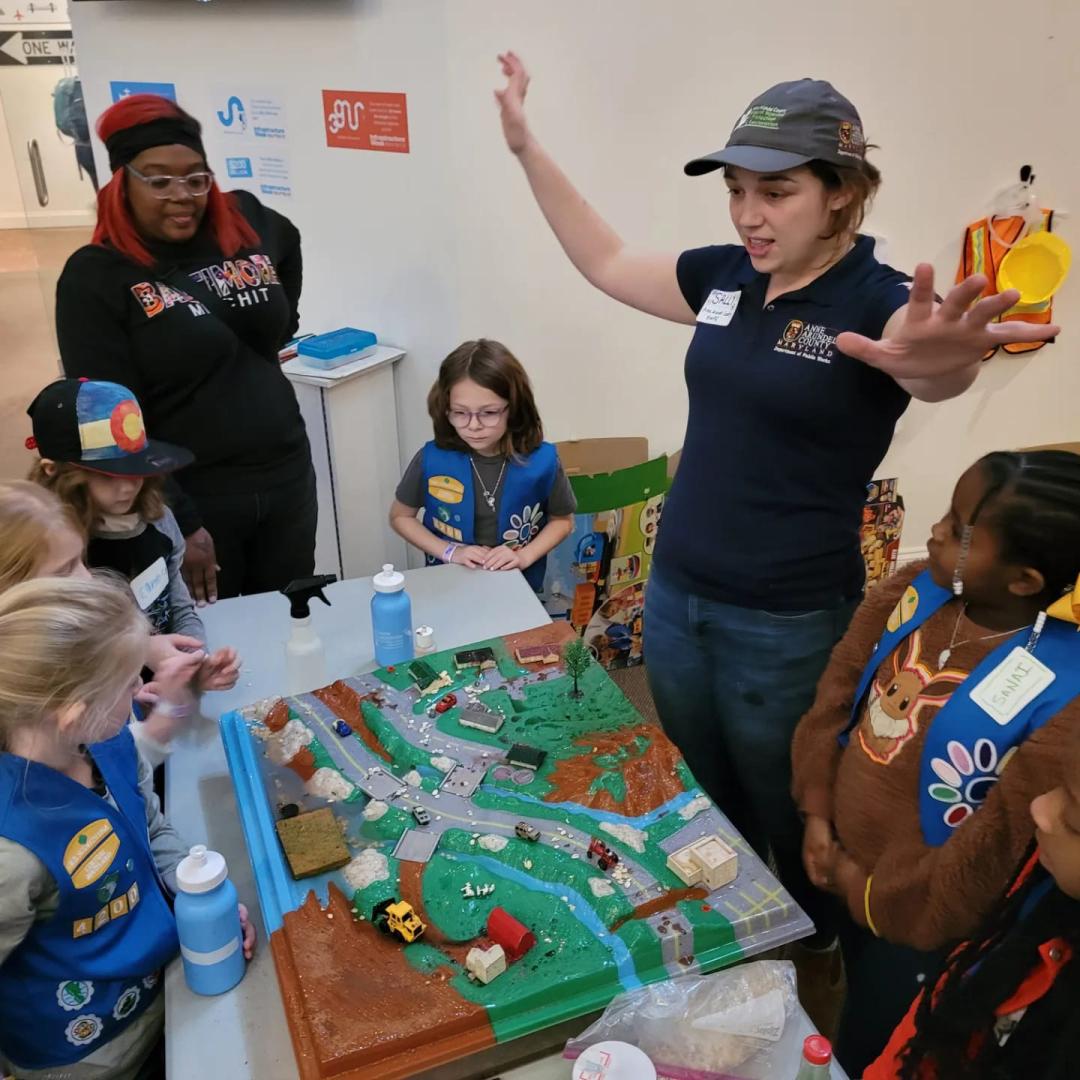Learning Resources
-
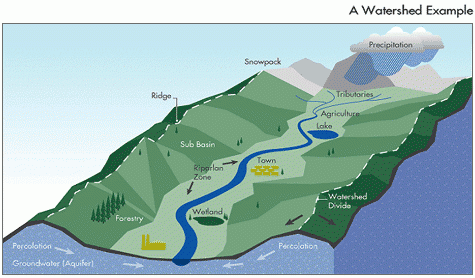 Explore Your Watershed
Explore Your WatershedAnne Arundel County consists of 12 primary watersheds and hundreds of sub-watersheds and all of them discharge directly into the Chesapeake Bay. Find yours!
-
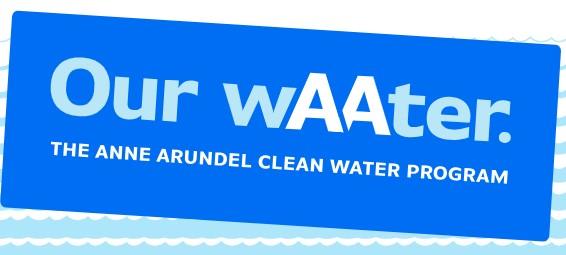 Our wAAter
Our wAAter"Our wAAter" is a County program that works to address water quality while simultaneously strengthening the County’s water resiliency by using an integrated approach with five initiatives: septic-to-sewer connections; small system upgrades; stormwater management/restoration; groundwater resiliency; and wastewater treatment enhancements.
-
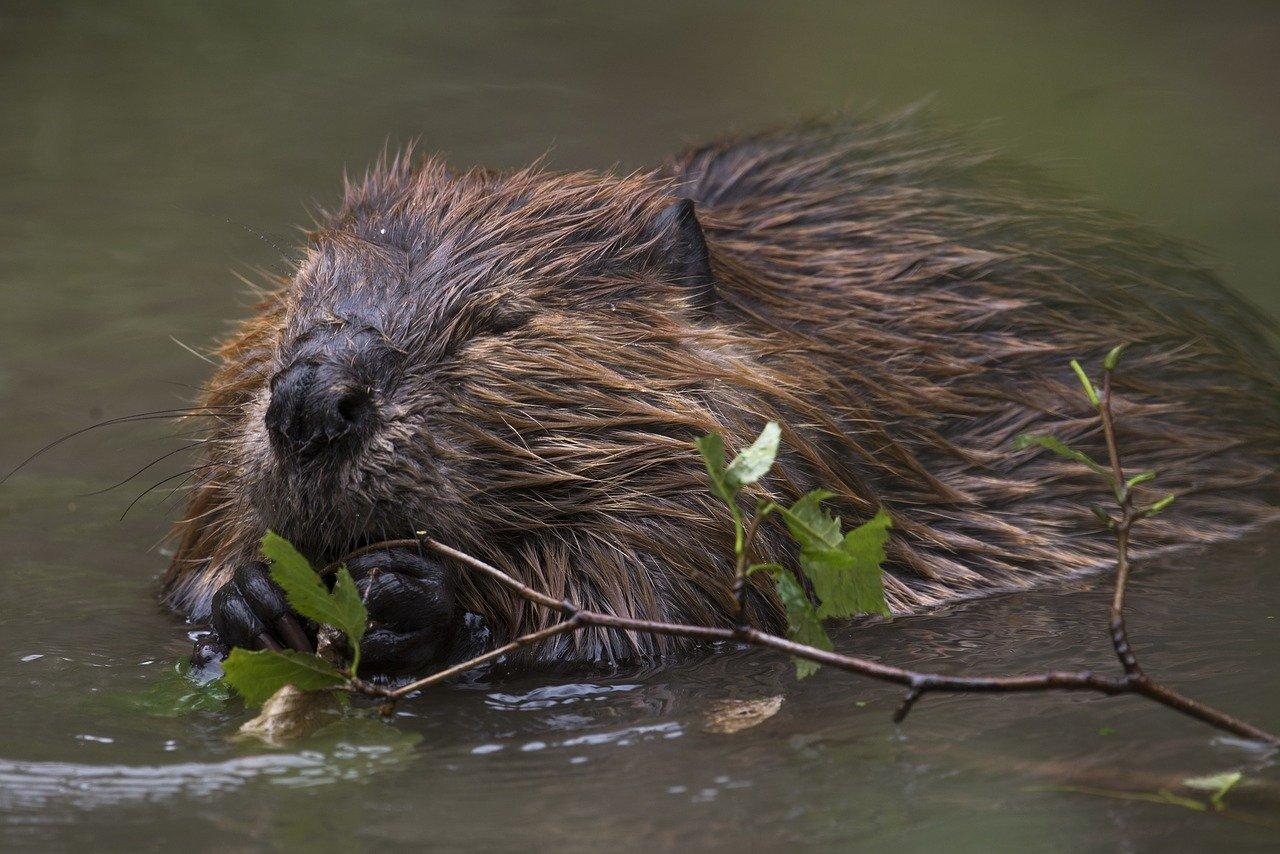 Living with Beavers
Living with BeaversBeavers are nature's engineers! Learn all about your amazing, native neighbor and all the important jobs they do!
-
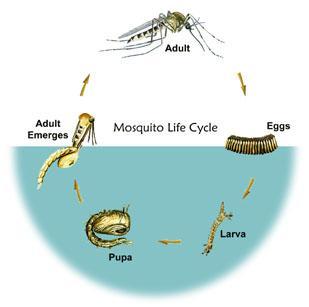 Mosquitoes and Stormwater BMPs
Mosquitoes and Stormwater BMPsWhen designed right, mosquitoes are not a concern on restoration sites. Learn how mosquitoes can colonize on your project and how to avoid it!
-
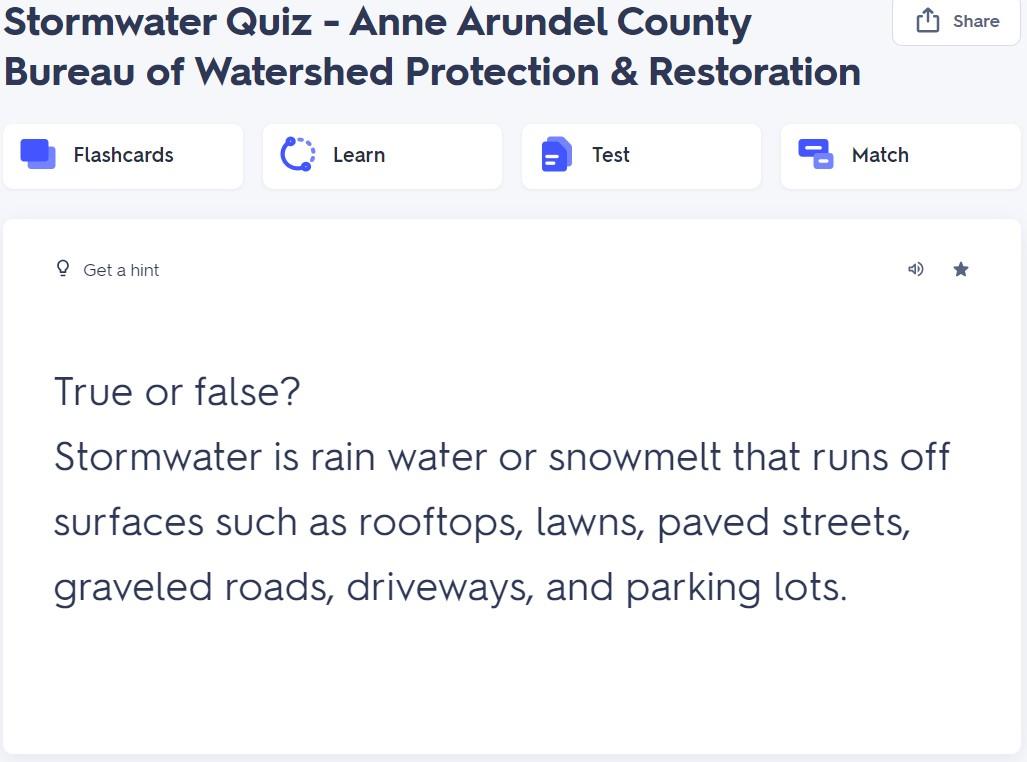 Stormwater Quiz (Free Quizlet!)
Stormwater Quiz (Free Quizlet!)Test your knowledge with this 10-question True/False Stormwater Quiz on Quizlet!
-
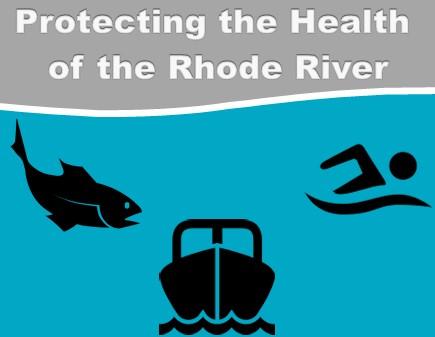 Rhode River Bacteria Brochure
Rhode River Bacteria BrochureThe historic Rhode River offers boaters a variety of on-the-water experiences. However, recent recurrences of excessive bacteria pollution can spoil boating, swimming, and fishing.
Stormwater FAQs
Many of our water pollution problems are due in large part to pollutants that are washed off the land by storms. The quality of stormwater from public facilities, commercial and industrial businesses, residences, and agricultural lands is an increasing concern nationwide. Many people believe that stormwater is "clean" and that it does not harm water quality. This perception is understandable since the amount of pollution from any one spot is not usually significant by itself. But when all these small amounts are combined, they can cause big water quality problems.
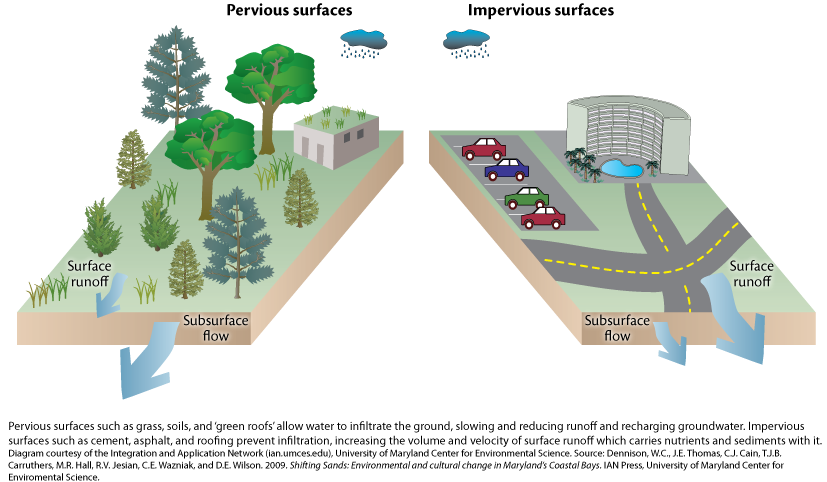
In vegetated areas such as forests, fields and wetlands most rain water seeps into the ground. However, when rain falls on paved and other hard surfaces it runs off and is conveyed by pipes and ditches directly to Anne Arundel County's waterways. This water that flows across the land is called stormwater runoff. Stormwater runoff although starting as rain, collects pollutants when it hits the ground and carries them with it. For example, runoff from parking lots picks up oil and grease dripped from cars, asbestos from worn brake linings, and zinc from tires. Pesticides, herbicides, and fertilizers are washed off from landscaped areas and lawns, and soils are washed away from construction sites. Any substance found on the ground can wind up in stormwater runoff.
Storm drainage systems are designed to decrease the chance of flooding in areas that have been developed with homes, businesses, and roads. The rainwater that used to be absorbed into vegetated areas is now collected and carried elsewhere. In Anne Arundel County, storm drainage systems collect stormwater runoff and carry it, untreated, to the nearest waterway or Best Management Practice (BMP). In urban areas the storm drainage system consists of drains and underground pipes. Storm drains are normally located in streets and parking lots. In rural areas the storm drainage system may be in the form of ditches that carry the stormwater along a roadside or piece of property. These drainage systems are meant to carry only unpolluted stormwater. Putting oil, antifreeze, detergents, and other material into the storm drainage system is the same as dumping them directly into a stream or river.
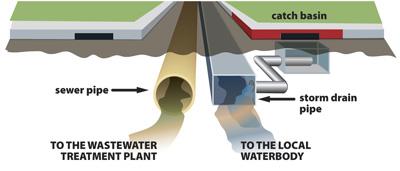
The sanitary sewer system is different. Sanitary sewer drains lead to the sanitary sewer system and end up at a wastewater treatment plant. This system carries household wastewater and some permitted industrial wastewater. The wastewater in this system is treated before being discharged into a natural water body.
Any substance that can render water harmful to people, fish, or wildlife or impair recreation or other beneficial uses of water is considered a pollutant. The broad categories of pollutants and their effects on fish and wildlife are described below:
Oils and Greases: Oils and greases are a common component of stormwater runoff pollutants, primarily because there are so many common sources: streets and highways, parking lots, food waste storage areas, heavy equipment and machinery storage areas, and areas where pesticides have been applied. The familiar sight of a rainbow-colored puddle or trickling stream in parking lots, driveways, and street gutters is a reminder of the presence of oils and greases in stormwater runoff. Oils and greases can be petroleum-based or food-related (such as cooking oils). No type of oil or grease belongs in surface water. Oil and grease are known to be toxic to aquatic organisms at relatively low concentrations; they can coat fish gills, prevent oxygen from entering the water, and clog drainage facilities (leading to increased maintenance costs and potential flooding problems).
Metals: Many heavy metals, including lead, copper, zinc and cadmium, are commonly found in urban runoff. Metals can contaminate surface and ground waters and concentrate in bottom sediments, presenting health problems for fish and animals that eat from the bottom. Reproductive cycles of bottom-dwelling species can be severely reduced, and fish inhabiting such metal-contaminated locations often exhibit lesions and tumors. Industrial areas, scrap yards, paints, pesticides, and fallout from automobile emissions are typical sources of heavy metals in runoff.
Sediments: Sediment - often originating as topsoil, sand, and clay - is the most common pollutant in stormwater runoff by volume and weight. Sediments readily wash off paved surfaces and exposed earth during storms. Sediment may seem harmless enough, but it poses serious problems in the water. Excess sediment concentrations turn stream and river water cloudy, making it less suitable for recreation, fish life, and plant growth. Sediment is of particular concern in fish bearing streams where it can smother aquatic eggs, destroy habitat for insects (a food source for fish), and cover prime spawning areas. Uncontrolled sediment can also clog storm drains, leading to increased private and public maintenance costs and flooding problems. Sediment is also of concern because many other pollutants including oils, metals, bacteria, and nutrients tend to attach to soil particles. Therefore when sediments enter water they usually carry other pollutants with them. Cleared construction sites and exposed earth are generally the greatest contributors of soil particles in surface waters. Other sources include erosion from agricultural lands, application of sand and salts to icy roads, fallout from pressure washing and sandblasting operations, dirt from equipment and vehicles, and dirt and grit from parking lots, driveways, and sidewalks. In addition, stream bank erosion is accelerated as stormwater runoff is swiftly routed through a network of pipes adding excess sediment to nearby waterways.
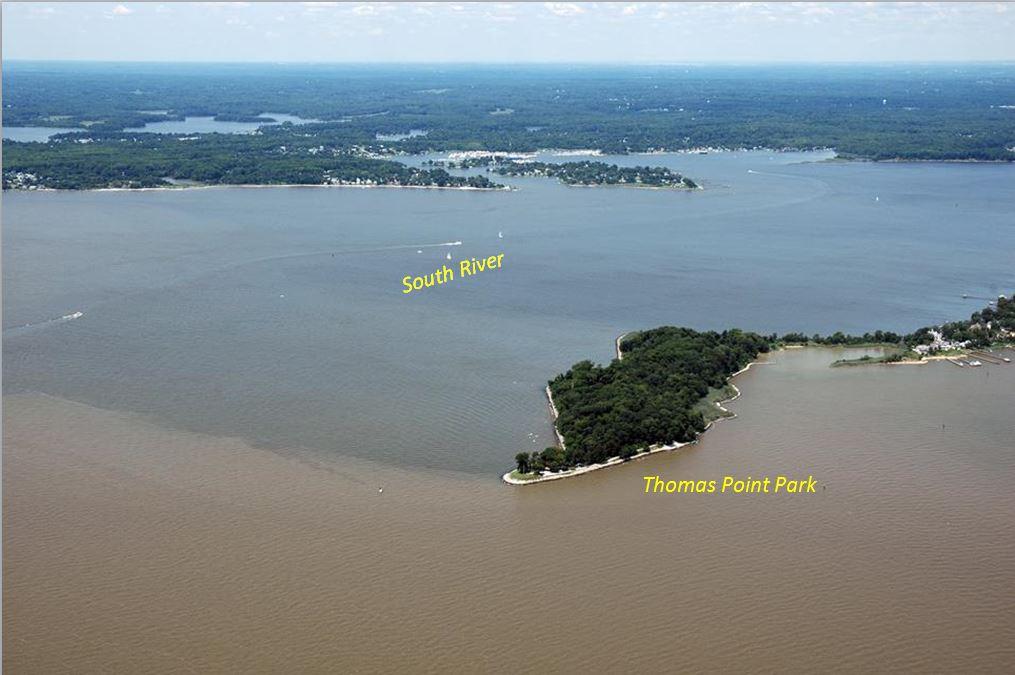
Oxygen Demanding Substances: Plant debris, food waste, and some chemical wastes fall into a category of water pollutants known as oxygen demanding substances. Such substances use dissolved oxygen in water when they decay or chemically react. If dissolved oxygen levels in water become too low, aquatic animals can become stressed or die. Aquatic animals are particularly at risk because they need high dissolved oxygen levels to live. Animal wastes, food wastes, leaves and twigs, and other organic matter carried by stormwater runoff into streams and rivers can lead to reduced oxygen levels. Slow-moving waters are particularly susceptible to oxygen depletion because aeration of the water by turbulence is lacking. Therefore, oxygen that is depleted in slow-moving waters due to the presence of excess organic matter or unnatural chemical compounds is not replaced. Reduced oxygen levels in these waters are often particularly severe after a storm.
Nutrients: Nutrients such as phosphorus and nitrogen are needed by plants to grow, but high levels can be harmful to water quality. Excess nutrient levels can over-stimulate the growth of algae and other aquatic plants, resulting in unpleasant odors, unsightly surface scums, and lowered dissolved oxygen levels from plant decay, also known as eutrophication. Some forms of algae are toxic to fish and other aquatic organisms and may even cause death in animals that drink affected water. Algae can also cause foul-smelling odor in ponds, and problems with clogged water intakes, drains, and pipes. Forms of nitrogen (ammonium), in combination with pH and temperature variations, can cause water quality problems and be toxic to fish. This process consumes large amounts of oxygen in the water and subsequently stresses or kills fish and other aquatic organisms when oxygen levels are reduced. Ammonia toxicity, due to nitrogen in its ammonium form, can harm fish and other aquatic organisms. Fertilizers, animal wastes, failing septic systems, detergents, road deicing salts, automobile emissions, and organic matter such as lawn clippings and leaves are all contributors to excessive nutrient levels in urban and agricultural stormwater runoff.
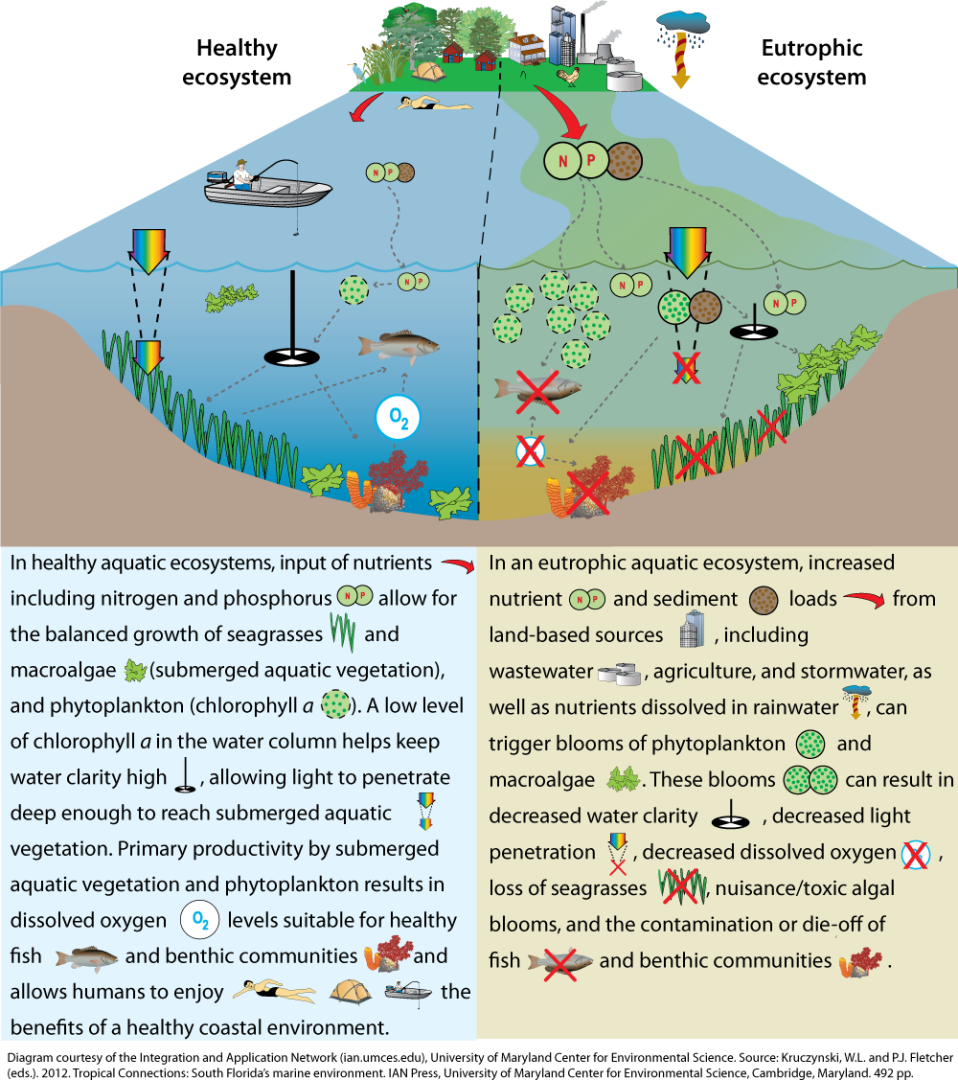
Toxic Organic Compounds: Pesticides and PCBs are toxic organic compounds that are particularly dangerous in the aquatic environment. Excessive application of insecticides, herbicides, fungicides, and rodenticides, or application of any of these shortly before a storm, can result in toxic pesticide chemicals being carried from agricultural lands, construction sites, parks, golf courses, and residential lawns to receiving waters. Many pesticide compounds are extremely toxic to aquatic organisms and can cause fish kills. PCBs are a similar class of toxic organic compounds. They can contaminate stormwater through leaking electrical transformers. PCBs can settle in sediments of receiving waters and, like pesticide compounds, present a serious toxic threat to aquatic organisms that come in contact with them. Many other toxic organic compounds can also affect receiving waters. These toxic compounds include phenols, glycol ethers, esters, nitrosamines, and other nitrogen compounds. Common sources of these compounds include wood preservatives, antifreeze, dry cleaning chemicals, cleansers, and a variety of other chemical products. Like pesticides and PCBs these other toxic organic compounds can be lethal to aquatic organisms. In some cases bioaccumlation - the accumulation of chemicals in the tissue of organisms through any route, including respiration, ingestion, or direct contact with contaminated water - can become a concern.
Fecal Coliform Bacteria: Fecal coliform bacteria in water may indicate the presence of pathogenic (disease-causing) bacteria and viruses. Pet and other animal wastes, failing septic systems, livestock waste in agricultural areas, and organic fertilizers such as manure, can all contribute fecal coliform bacteria. This can be a problem for treatment of drinking water and can limit recreational use of a water body. Bacterial contamination has led to closures of numerous shellfish harvesting areas and swimming beaches in Anne Arundel County as well as the Chesapeake Bay.
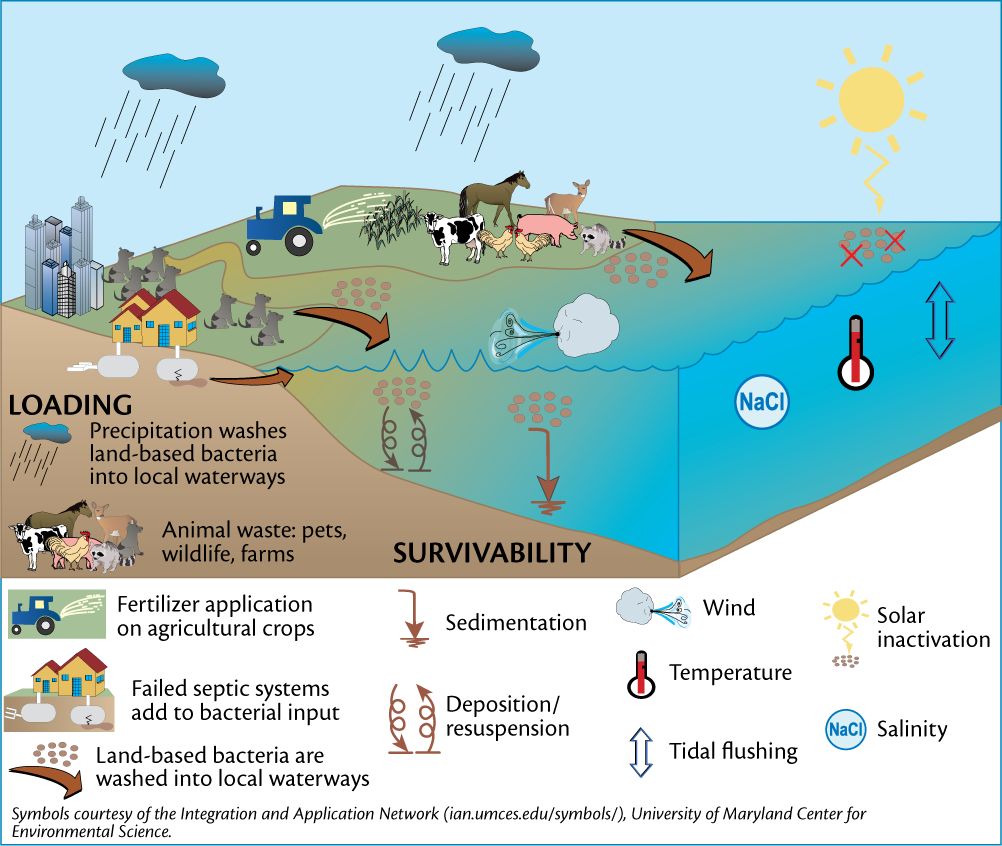
pH: The pH value of water is an indication of its relative acidity. The pH value can range from 0 to 14, with a range of 6 to 8 being desirable for most bodies of water. Waters with very high (basic) or very low (acidic) pH are corrosive to metal surfaces and can cause biological problems for aquatic organisms and fish. There are several sources that can contribute to change of pH in runoff. These include industrial processes that discharge acidic wastewater, solutions used in metal plating operations, acidic chemicals used in printing and graphic art businesses, cement used in concrete products and concrete pavement, and chemical cleaners used in homes and businesses.
The Bureau of Watershed Protection and Restoration is at the core of Anne Arundel County's program to meet Federal and State mandated pollutant load reductions required to achieve the Chesapeake Bay TMDL, including those local TMDLs established for Anne Arundel County's waterways, and impervious surface management requirements under Anne Arundel County's NPDES MS4 Permit. The Bureau of Watershed Protection and Restoration uses state-of-the-art techniques to reduce sediment, nutrients and other pollution to the County’s creeks, streams and rivers. The Bureau's goal is to protect, enhance, and restore the water resources of Anne Arundel County. The program structure is based on the County’s 12 primary watersheds in order to provide a comprehensive framework of protection and restoration of the County’s natural resources.
Implementation of our stormwater restoration strategy is focused on three key areas:
Stormwater Management Pond Retrofits: Existing facilities, such as dry ponds, detention ponds, or infiltration basins that have failed or provide little to no water quality benefits, will be rebuilt to optimize their pollution reduction capacity and provide an array of ecosystem benefits.
Stormwater Outfall Repairs: Eroded or failing stormwater outfalls - locations where storm drainage systems discharge onto erosive soils - will be reconstructed into systems that can both safely convey high storm flows as well as provide water quality benefits and aquatic habitat.
Stream and Wetland Restoration: Stream erosion is the largest contributor of sediment and phosphorous to our local waterways, and the County's strategy to re-hydrate valley bottoms though restoration will provide water quality, floodplain connection, and ecological benefits on a broad scale.

Many of our daily activities have the potential to cause stormwater pollution. How you manage your day to day activities and property can determine the quality of your drinking water and local swimming and fishing areas. Remember, “You are the solution to pollution!” Here’s how you can help prevent stormwater pollution.
Resources for Further Learning
- EPA "Stormwater Smart" tools (disponible en Espanol!)
Contact Us
For questions or to inquire about a site visit, please contact our Education and Outreach Coordinator, Sally Albright via email or at (410) 222-0136.

